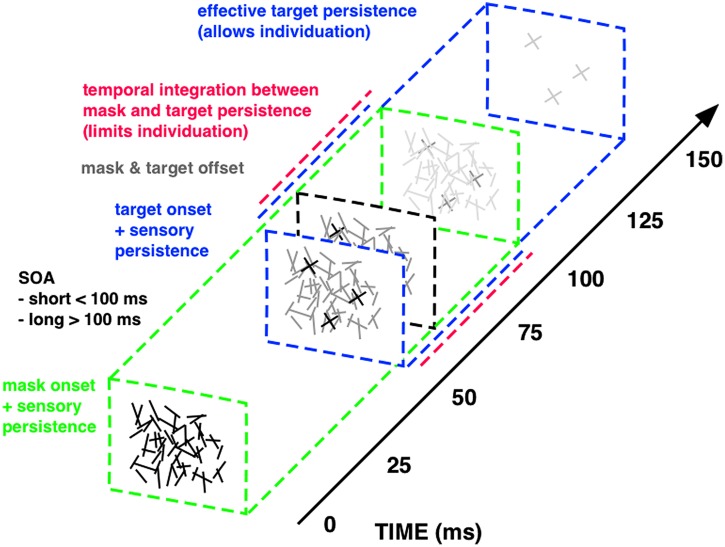FIGURE 2.
Integration masking sequence. The visual stimuli within this integration masking sequence, a random-line noise mask and the target elements (“X”), are rendered physically indistinguishable (i.e., equal luminance, equal mean line length and width, random spatial position of lines), enforcing integration of physical features via mask-target similarity (Blalock, 2013). Mask and target events also offset together at the same time (gray square at about 60 ms on above scale), so that temporal onset asynchrony between visual stimuli (SOA; 50 ms above) constitutes the only physical difference between mask (green square at 0 ms) and target events (blue square at 50 ms). Temporal integration of mask and target features (red, dashed line) occurs for SOAs shorter than around 100 ms, since masking triggered at mask onset continues for this quasi-constant period of sensory persistence (green, dashed line). With longer SOAs the sensory trace triggered at target onset (blue, dashed line) successively segregates from masking persistence and the therein-contained target information can be read-out for an increasingly longer interval. The maximum time window available for target read-out spans the entire effective target persistence (i.e., without integration from preceding masking persistence) of around 100 ms (see Wutz et al., 2012, 2014; Wutz and Melcher, 2013 for details on the masking sequence).

